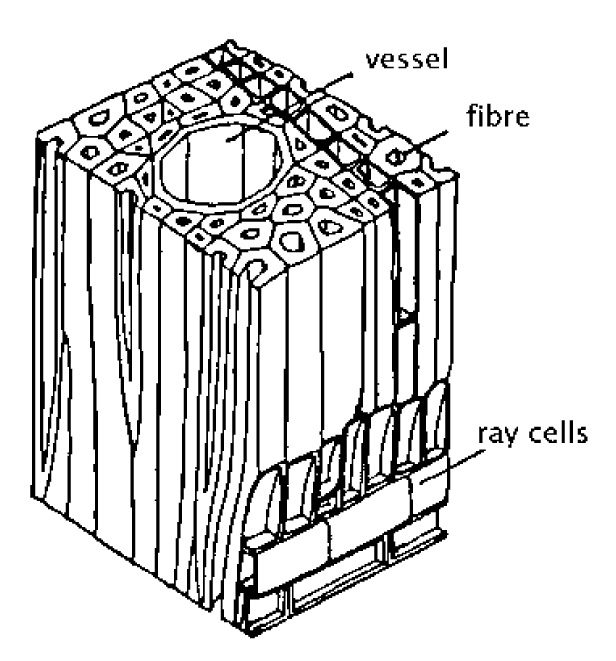All the cells that constitute wood material are formed in the narrow cambium layer, which separates the wood from the bark. The walls of these cells are made up of a network of complex chains of cellulose molecules, which are called microfibrils. When the formation of the cell wall is complete, lignin gradually extends through the cell walls, acting as a bonding agent that “glues” the cells together. The newly formed cells on the inner side of the cambium, become one of the following types of wood tissue: cells fibers, and in hardwoods, vessels.

Each of these tissue types performs one or more of the following specific functions: vessels occur in hardwood timber only and conduct water and dissolved mineral salts from the roots to the leaves. These transmitted fluids provide the basic “raw materials” for photosynthesis.cells store food materials and water, and in softwood species also perform the same conduit function as the vessels do in hardwoods fiber is a collection of cells and provides mechanical strength of wood.
Most of the cells are vertical in the tree trunk and together form fibers which are elongated particles with the long axis parallel to the longitudinal axis of the trunk (and the lengths of timber when sawn). These fibers form the “grain” of the timber.
Other cells are laid down radially. (They go from the centre of the tree outwards to the bark, much like spokes in a wheel.) The rays hold the other fibers together, transfer shear in the growing tree, and ultimately affect shrinkage and other properties of sawn wood.
Apart from extractives, there are three main chemical components of wood: cellulose, hemicelluloses and lignin: Cellulose represents about 40-45% of wood and is a long chain molecule (one dimensional) generally oriented parallel to the long axis of the cell, Hemicelluloses about 15-30% of hardwoods and about 20% of softwoods. It is a derivation of cellulose that is a two dimensional (planar) organic molecule, Lignin comprises 22-30% and is an amorphous substance (like a gel).

